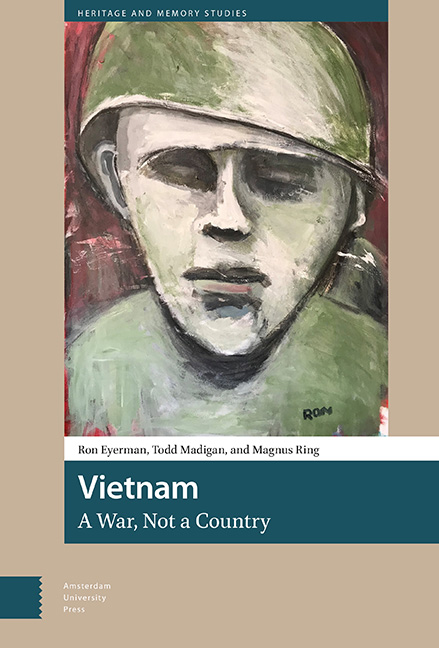Book contents
- Frontmatter
- Table of Contents
- Preface
- 1 Introduction: Cultural Trauma and the American-Vietnamese War
- 2 Cultural Trauma and Vietnamese Arenas of Memory
- 3 The Trauma of Vietnam: The American Perspective
- 4 Journey From the Fall
- 5 Cultural Trauma and Vietnamese-American Arenas of Memory
- 6 Conclusion: War, Trauma, and Beyond
- Index
4 - Journey From the Fall
Published online by Cambridge University Press: 29 November 2023
- Frontmatter
- Table of Contents
- Preface
- 1 Introduction: Cultural Trauma and the American-Vietnamese War
- 2 Cultural Trauma and Vietnamese Arenas of Memory
- 3 The Trauma of Vietnam: The American Perspective
- 4 Journey From the Fall
- 5 Cultural Trauma and Vietnamese-American Arenas of Memory
- 6 Conclusion: War, Trauma, and Beyond
- Index
Summary
Abstract
Unlike both the Vietnamese communists and the broader American society, the South Vietnamese experienced at the end of the American-Vietnamese War the annihilation of their governmental and political institutions, military forces, economic system, and mode of social organization: their state, the Republic of Vietnam, was simply snuffed out. What’s more—and also in contrast to the communists and the rest of the United States—the individuals who would become Vietnamese Americans were displaced from their homeland to a foreign country. The dissolution of the Republic of Vietnam and the dislocation of the Vietnamese to North America led this group to construct a new collective identity over the course of subsequent years, and the present chapter provides an overview of what the Vietnamese Americans consistently narrate as the key moments of their shared experience.
Keywords: Vietnam War, cultural trauma, collective memory, cultural sociology, Vietnamese American, narrative identity
How did we get to such a lonely place? … I keep looking toward the past…tracing our journey in reverse…over the ocean…through the war…seeking an origin story that will set everything right.
From the graphic novel The Best We Could DoIt should be clear by this point in the book that although the collective memories of the American-Vietnamese War share the same subject matter, the way those memories are narrated within each of our three main social groups differs substantially. In the case of the Vietnamese Americans, to whom we now turn our attention, the most radical differences in terms of content derive in part from two historical peculiarities. First, unlike both the Vietnamese communists and the broader American society, at the end of the war the South Vietnamese experienced the annihilation of their governmental and political institutions, military forces, economic system, and mode of social organization: their state—the Republic of Vietnam—was simply snuffed out. Second, also in contrast to the communists and the rest of the United States, the individuals who would become Vietnamese Americans were displaced from their homeland to a foreign country. As we pointed out in the book’s introduction, when a collectivity understands itself to have suffered a significant calamity, one that fractures its collective identity, then if it is to persist as a collectivity, it must reconstitute its identity.
- Type
- Chapter
- Information
- Vietnam, A War, Not a Country , pp. 193 - 236Publisher: Amsterdam University PressPrint publication year: 2023

